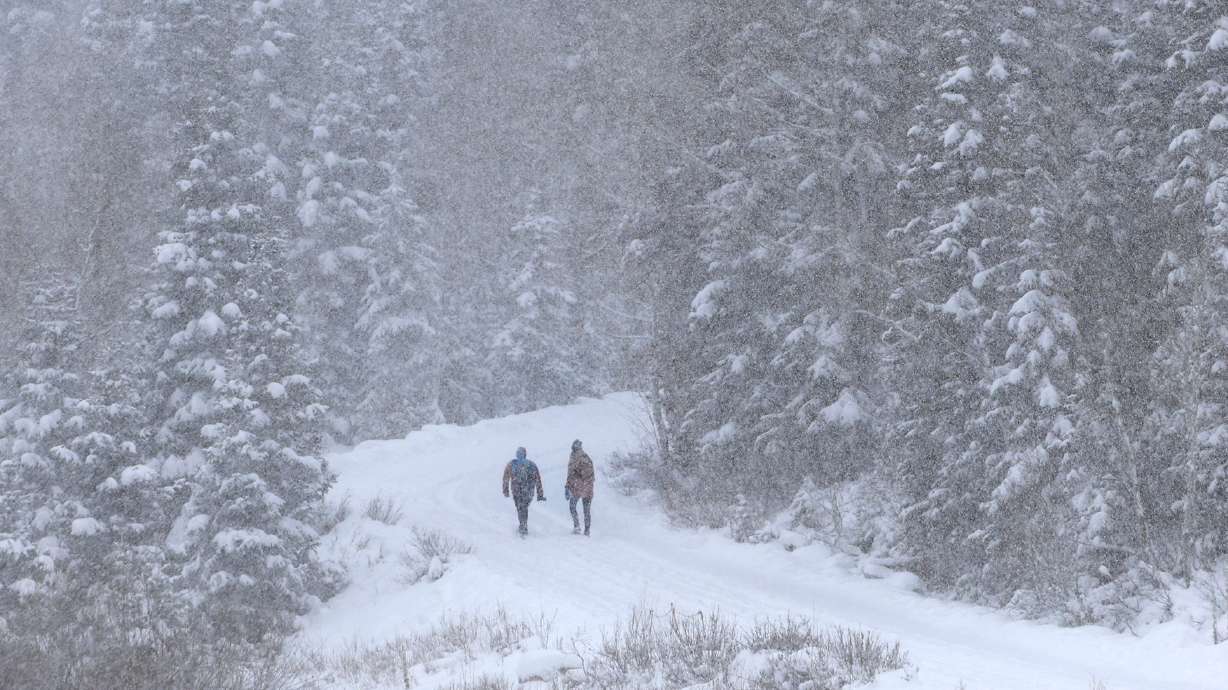Air quality is unhealthy. What causes Utah’s weather inversions?
Dec 20, 2021, 4:22 PM | Updated: 5:29 pm
SALT LAKE CITY — Utah is known for its winter inversions, but there are different things that cause them.
On Monday, a number of monitoring stations across the Salt Lake Valley showed air quality to be red or unhealthy. The good news is the inversion will likely be blown out of the valley midweek by an approaching storm.
Expect worsening air quality through midweek as inversion sets up
According to the Environmental Protection Agency, the air quality index, or AQI, measures air pollution levels on a scale from 0 to 500.
- An AQI under 50, or “green” on the map, is considered good air quality,

KSL Air Quality Network shows monitoring stations in across the Wasatch Front on Monday. “Red” denotes unhealthy air quality. Screen shot via https://www.ksl.com/weather/airQuality
- Between 51 and 100, “yellow”, is moderate category,
- Between 101 and 150, “orange”, sensitive groups should take precautions against unhealthy air and
- Over 150, “red”, is unhealthy for all.
What causes Utah’s inversions?
According to the Utah Department of Environmental Quality, the state’s inversions are caused by combining the topography, or the natural and artificial features of an area, weather patterns in the region, and emissions.
Normally, air temperatures rise with the altitude, but in winter this pattern can “invert,” meaning cooler air is trapped in valleys beneath a lid of warmer, calm air.
Particulate emissions are small yet dangerous
Under this lid, pollutants mix with chemicals from emissions containing fine particulates such as PM2.5. These liquid droplets and solid particles are found in the air and are so small they’re a fraction as wide as a strand of hair. But that makes them easy to inhale and enter your lungs.
PM2.5 has been linked to aggravated asthma, decreased lung function, and increased respiratory symptoms, such as coughing or difficulty breathing.
The majority of PM2.5 is formed through atmospheric reactions of chemicals such as ammonia, nitrogen oxide, and volatile organic compounds, emitted from sources including industrial processes and vehicle exhaust, according to DEQ.
But much like advice to protect yourself from COVID-19, if you wear the right mask, it’ll help your lungs stay away from bad inversion effects. N95 and KN95 masks can filter out 95% of airborne particles larger than 0.3 microns.
What can I do to improve the air quality?
The biggest impact one individual can make in the inversion is to limit the air pollution you generate:
- Don’t let your car or truck idle.
- Limit your driving by combining errands into a single trip. When possible carpool, use public transit, bike, or walk.
- Replace the air filter on your indoor furnace and make sure it is functioning properly.
- Don’t burn wood. If you rely on wood for heat, you may be eligible to replace your wood-burning stove or fireplace through the state’s Wood Stove and Fireplace Conversion Assistance Program.
- Fuel up with Tier 3 gasoline, which can cut car pollution by 80%. You can find stations with Tier 3 gasoline by visiting tier3gas.org.
Utah governor praises cleaner-burning Tier 3 fuel coming to Utah
When does this inversion leave?
KSL Meteorologist Kristen Van Dyke predicts air quality in Utah will improve starting Thursday with rain switching to snow on Christmas Eve. So put your mask on, and stay out of the gunk until then.













